I still have one of the toys that Saint Nicholas left in my boots when I was a child, it’s a mother gorilla stuffed toy holding a baby gorilla in her arms. I had named her Uga because at that time I thought she looked like the daughter of Ugo Fantozzi, an Italian series my mother was watching on TV. I gave it to Friboy a while ago and told him that it was from Saint Nicholas, he was shocked because he doesn’t picture me as a child. I am his mom, I couldn’t have been a smaller person that believed in magic and waited impatiently for Saint Nicholas just like him. He never reacted like this when I showed him photos of me as a child, this gorilla made me that little girl in his eyes.
And this gift was even more special because I had gotten it from Saint Nicholas which made this character even more real. Swiss developmental psychologist Jean Piaget theorized that magical thinking is a central part of young children’s cognitive thought, he discovered that before the age of 7 children link their thoughts and activities to physical events that happen around them (I remember how I walked 3 steps backwards each time a black cat crossed my path to prevent the bad luck this event would trigger). More recent studies suggest that children do have the ability do discern real from imaginary and to display initial skepticism when presented with a novel experience and that cultural support plays an critical role in the acceptance of make believe. Margaret Mead’s study of native people on Manus Island (New Guineea) also suggests that magical thinking is less common in children rather than adults in traditional societies. According to her field observations, children understood events in terms of material causality while adults who had gone through special rites of initiation might link them to ghosts, the evil eye or animist forces.
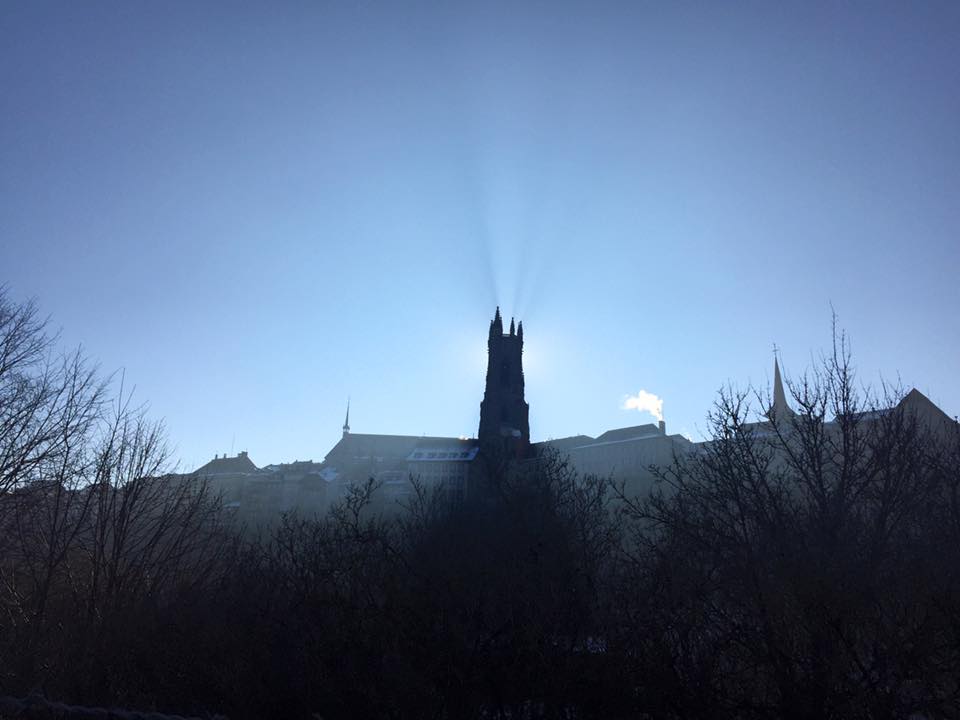
In Fribourg, in the case of Saint Nicholas, this cultural support is as huge as the festivity itself, last year 30.000 people took to the streets of the city to see the traditional procession organised by the Saint Michael Gymnasium. Saint Nicholas and Fribourg have a long standing history together, a tradition which has evolved throughout the years, which made it very much alive today.
He is the patron saint of the city, he has his own annual procession on the first Saturday of December, the Saint Nicholas fair and Fribourg’s Gothic cathedral is dedicated to him. The students of St. Michael Gymnasium create a greetings card each year in his honor and starting last year there is Families’ Day, with a plethora of activities for families and children proposed by volunteers, local artists or businesses…not to mention the thousands of biscômes (a type of gingerbread) that are baked yearly in his honor.
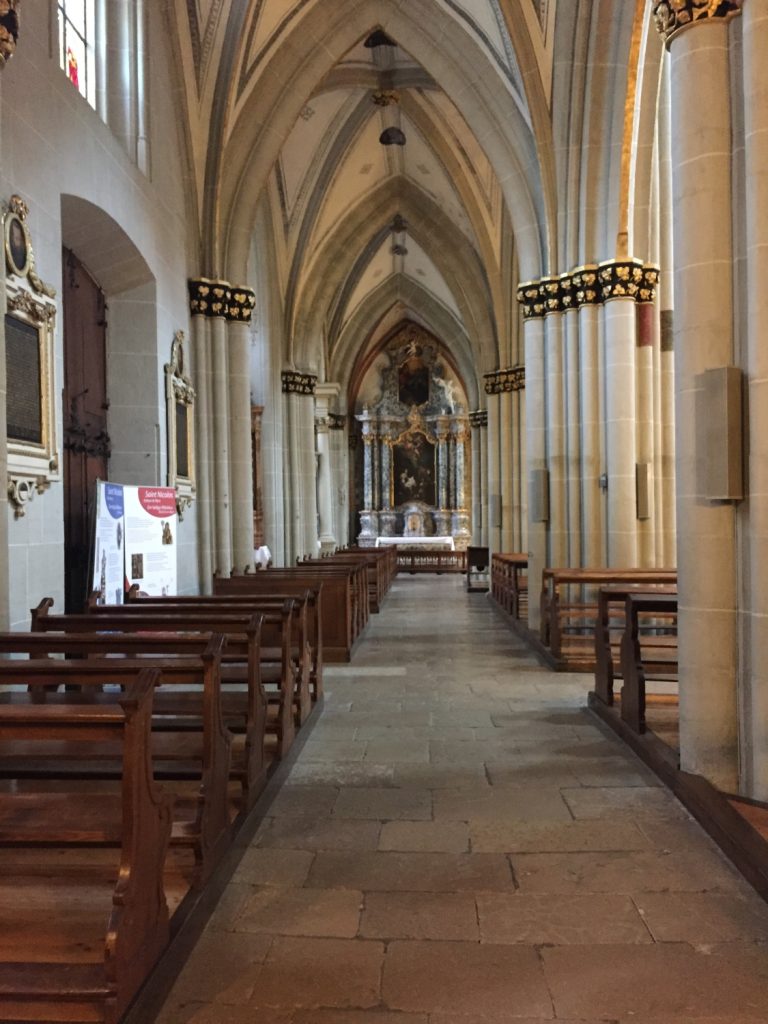
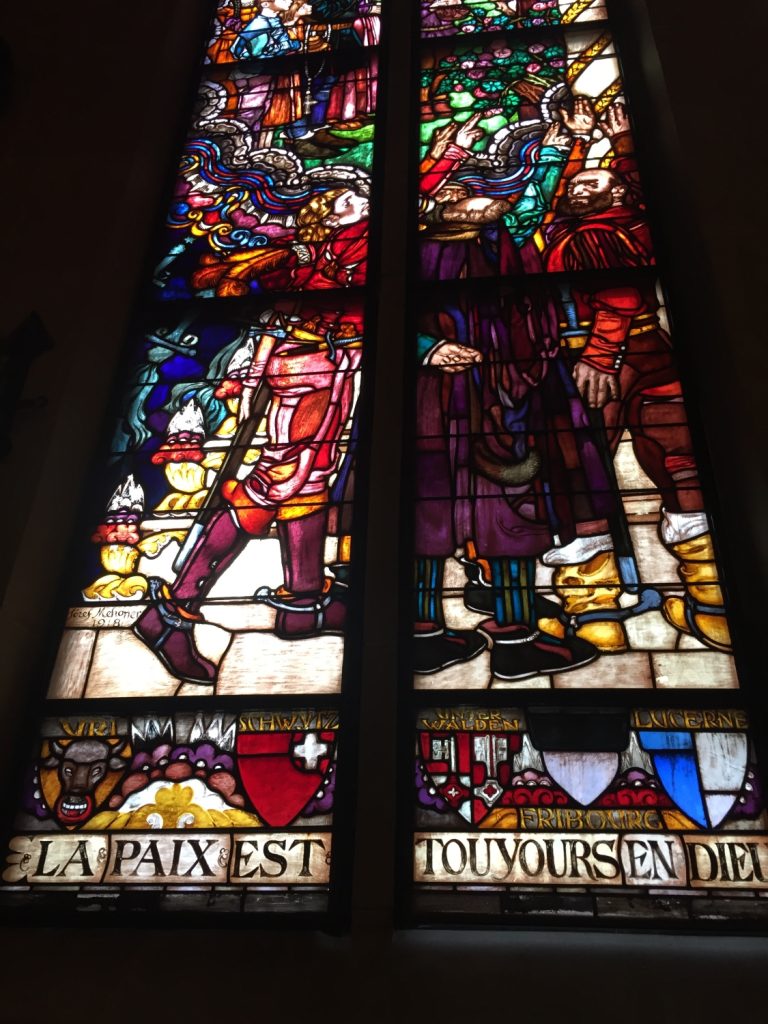
Born in 270, in nowadays southern Turkey, Saint Nicholas of Myra has become the most eclectic living tradition of Christianity, appropriated by most of Europe and successfully used by the church to replace pagan practices that were incompatible with newly acquired christian values. For instance, in Roman Europe, gift giving was a practice during Saturnalia festivities held at the end of December, where people would exchange small clay or wax figures called sigillaria. After christianization, Christmas gradually replaced Saturnalia while gift giving was associated with Saint Nicholas. However, pre-christian practices and patterns of thought coexisted with Christianity until today, especially in those parts of Europe where religion did not undergo reform (orthodox Europe).
In Slavic Europe Saint Nicholas is a complex personality who borrowed traits from several mythological figures and also from various apocrypha that circulated throughout Europe:
- Волос (Volos) – the Slavic God of the seen (earth, waters, forests) and unseen (underworld) worlds
- ле́ший (Leshi) – a spirit that rules over forests, forest animals and hunting
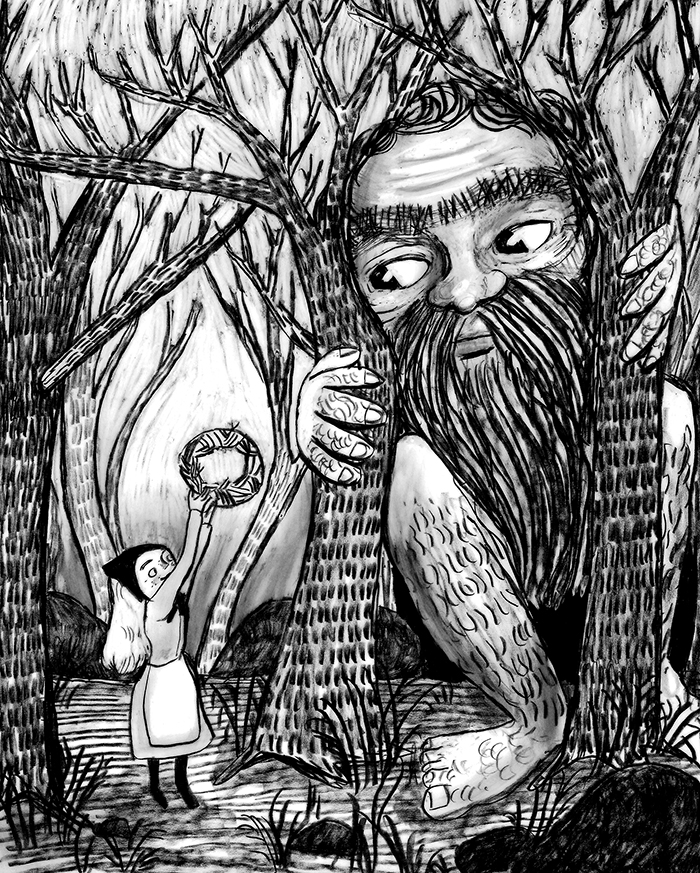
For instance in the Kashubian folklore Saint Nicholas has the power to throw obstacles at people crossing forests, conditioning their safe passage to solving his riddles, an attribute previously held by the leshi spirit. If they fail, he will give them to the demon. In Russia he is also the patron of domestic animals, when farmers take out their cattle for the first time after a long winter, they circle their enclosure holding an icon and pray to Saint Nicholas. Both in western and eastern Slavic traditions, he is the patron of agriculture. Peasants would start sowing their fields on the day of Saint Nicholas (celebrated in spring) because he was credited with the ability to make wheat germinate. Also, during harvest, they would leave a last wheat-sheaf untouched, on the field, in honor of Saint Nicholas, a practice previously dedicated to Volos. In Slovakia he is the patron of merchants, Saint Nicholas Day is particularly favorable for closing important deals.
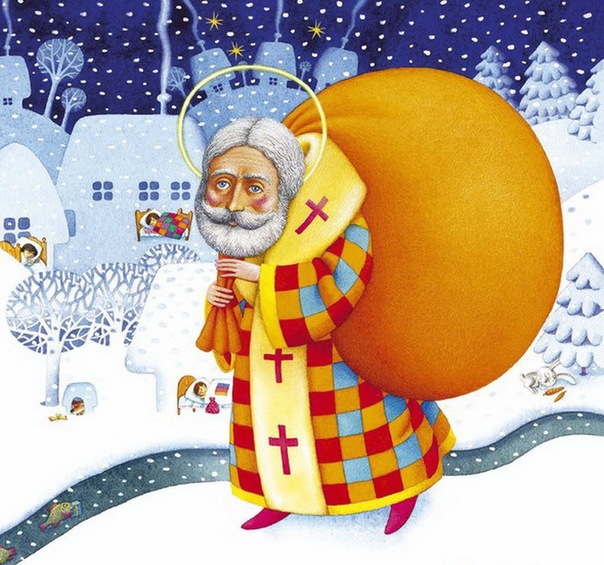
Saint Nicholas is also credited with helping young girls marry, the legend where he gives money to a poor man who had three daughters in order to help them get married and avoid a worse fate (like prostitution) has circulated throughout Europe. He is the patron of sailors (even in Switzerland, a landlocked country), of children, of mine-workers and happy marriages. Adding to his eclecticism, in some parts of Romania (Bukowina) it was said that thieves prayed to Saint Nicholas to help them in their endeavors.
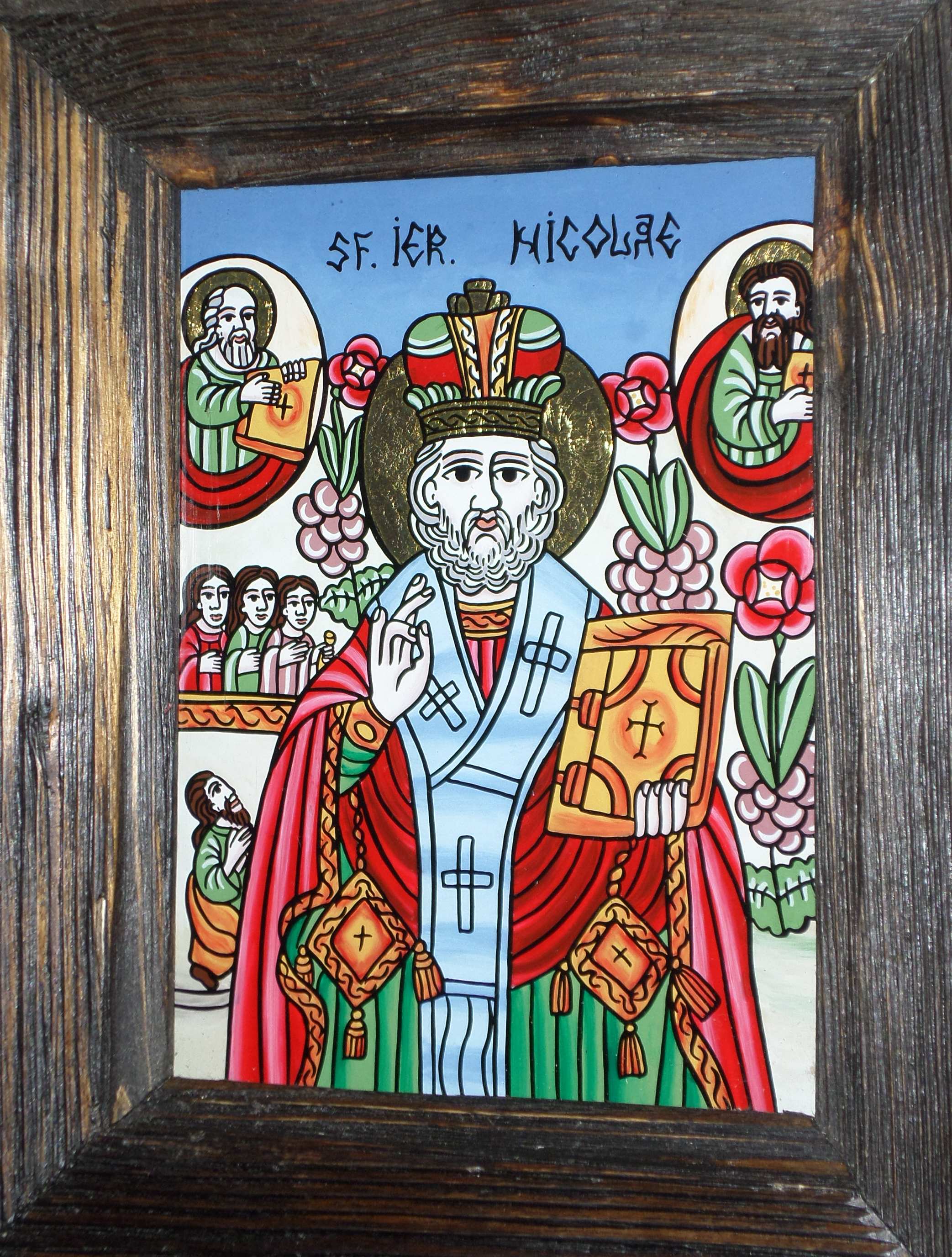
Also from Romania comes my favorite legend about Saint Nicholas – the guardian of the sun. In Romanian folklore, saints that are celebrated towards the end of the year get older and older, while christian figures from the beginning of the calendar have a young appearance, symbolizing the passage and renewal of time. Thus, Saint Nicholas is an old man with a big white beard, patron of winter and bringer of the first snow, it is said that when it snows, Saint Nicholas has shaken his beard. He is in charge of guarding the western doorway of the sky, where the sun, tired of seeing the misbehavior of men, tries to get away northward, leaving the world in cold and darkness.

His choice of transportation means and company is equally eclectic:
- in Switzerland he rides a donkey and is accompanied by the Père Fouettard / Schmutzli or the Geisselklepfer in Künssnacht (canton of Schwyz)
- in Slovakia he is accompanied by an angel and a demon (or by 3 men in masks: a goat, the goat leader wrapped in straw and a man dressed as a woman)
- in Austria and Bavaria the Schmutzli is replaced by a goat-like demon – the Krampus
- in Romania he rides a white horse
- in the Netherlands Sinterklaas arrives by a steamboat from Spain
Switzerland has a tradition of processions dedicated to Saint Nicholas that arose in the Middle Ages from the need of the church to educate illiterate people about christian religious rites and also to accompany liturgical celebrations. Some of these processions coincided with secular events such as markets or fairs. This is the case of the Saint Nicholas tradition in Fribourg which began centuries ago with a fair, Foire aux étrennes, held at the beginning of December. The religious procession that followed seemed to be incompatible with such a gregarious, morally inadequate manifestation, so in 1764 it was cancelled by the local council.
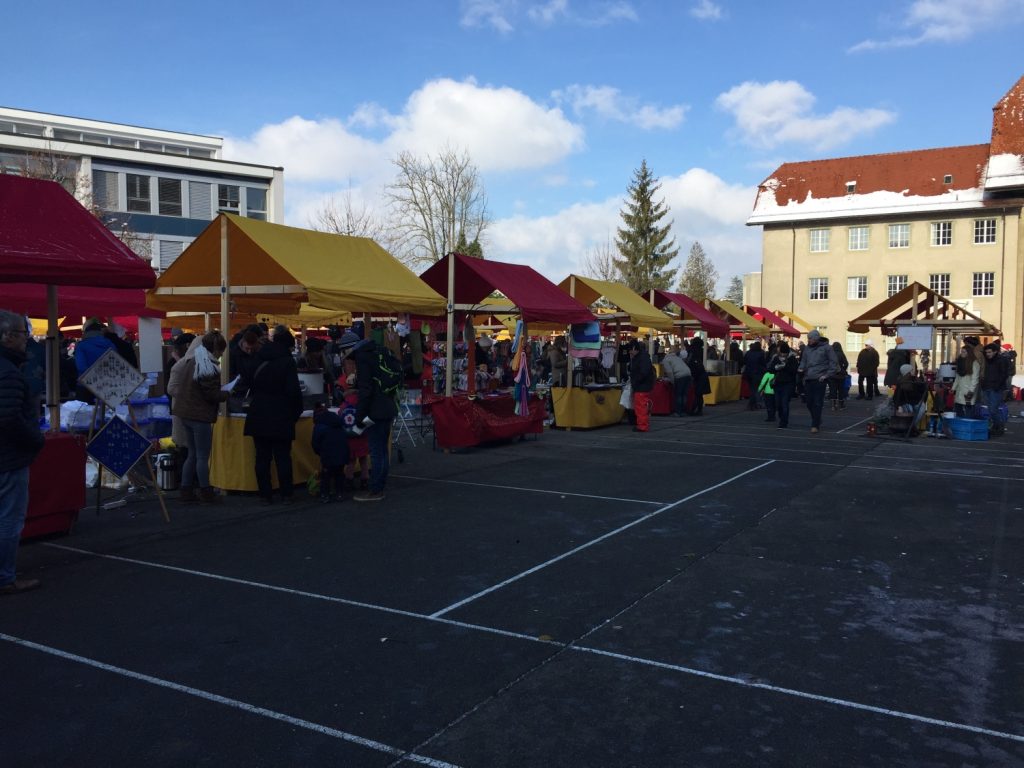
It was reborn only in 1906, when the students of Saint Michael Gymnasium decided to play dress up, initially as a prank. But their prank was so successful, that the Saint Nicholas procession became a living tradition again. Every year the best student in rhetoric from this gymnasium dresses up as Saint Nicholas and is greeted by thousands of adults and children to whom he launches the traditional biscôme. He will also give a moralizing speech from the Saint Nicholas cathedral’s balcony.
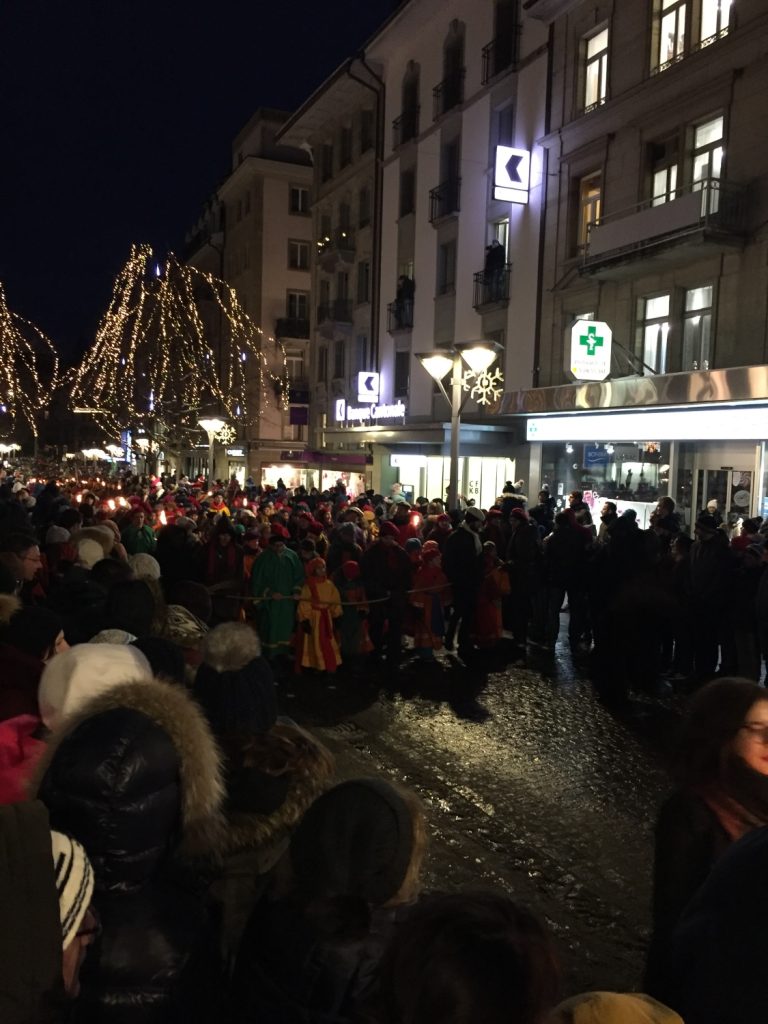
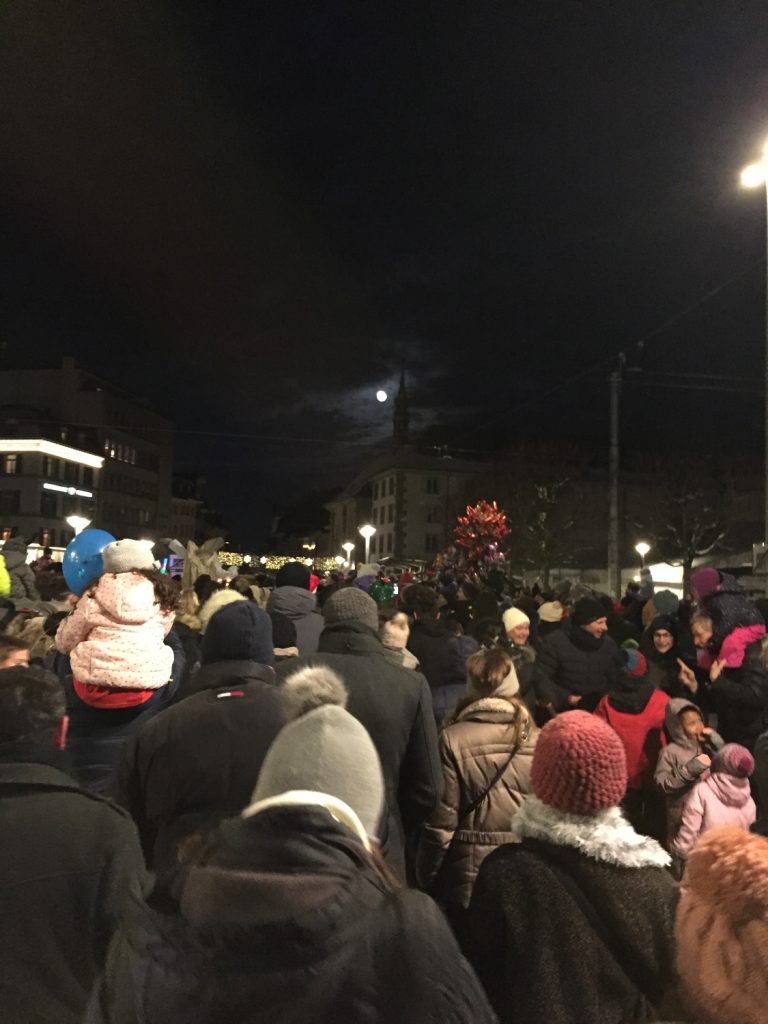
The diverse imagery of Saint Nicholas inspired this illustration of him relaxing and drinking tea à la fribourgeoise (recipe coming up in a another blog post, this one is already too long…thank you for reading so far). This is how I pictured him, in his austere yet modern bubble, needing a respite from all the veneration and tasks he has to perform. Magical beings need to be well anchored in present realities, in order to survive the cruelty of time, and Saint Nicholas seems to have understood how things work and keeps reinventing himself. From his travels across the world he has stylishly appropriated the right elements: he prefers his tea à la fribourgeoise, but he uses a samovar like the Russians, he loves richly decorated eastern textiles and he will wear Vans because they make him feel young. So his steps are young and alive to this day.
Follow the steps of Saint Nicholas here.
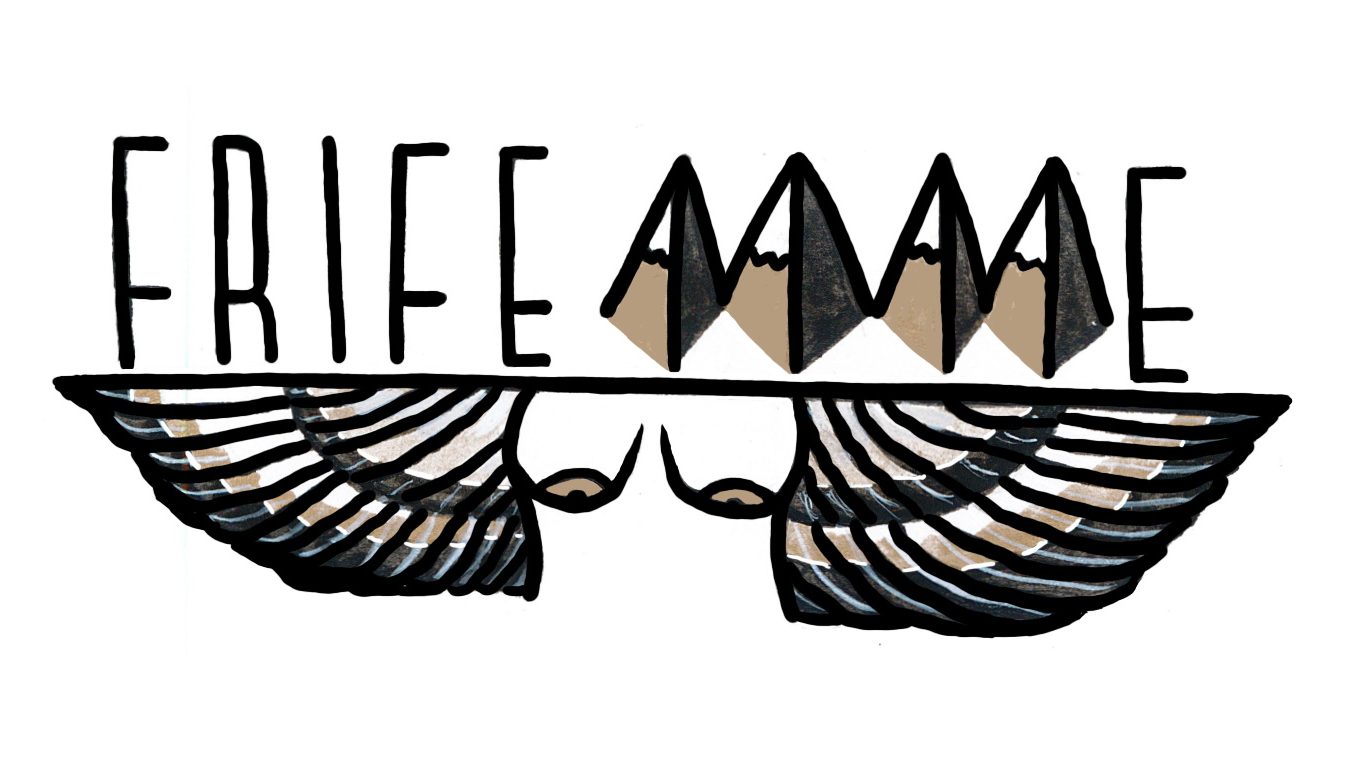
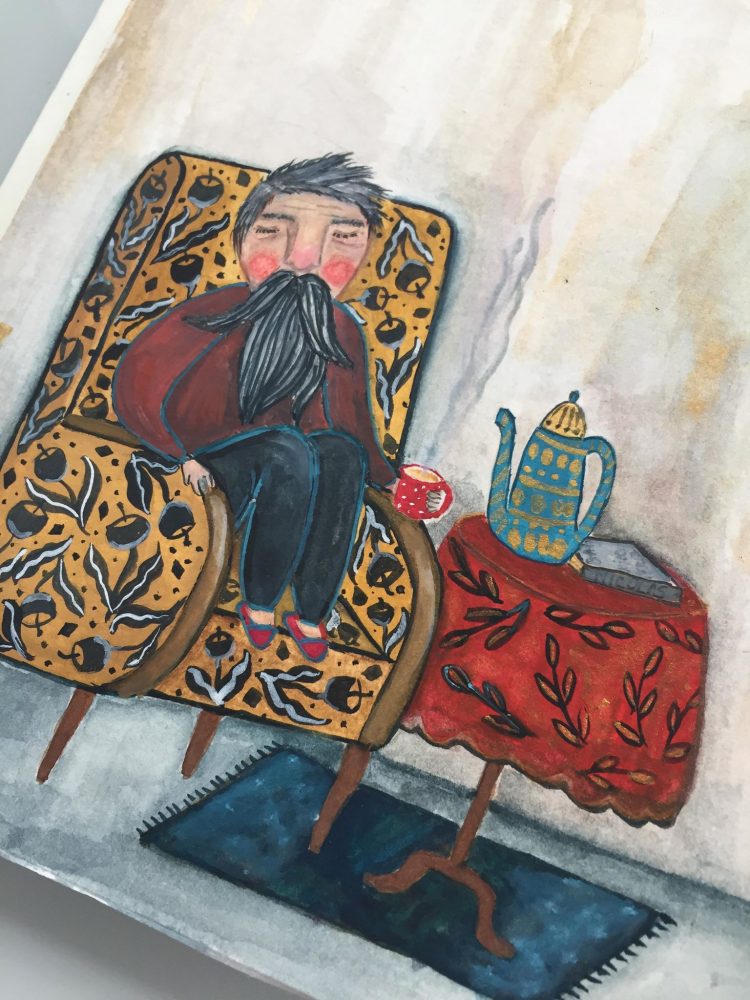
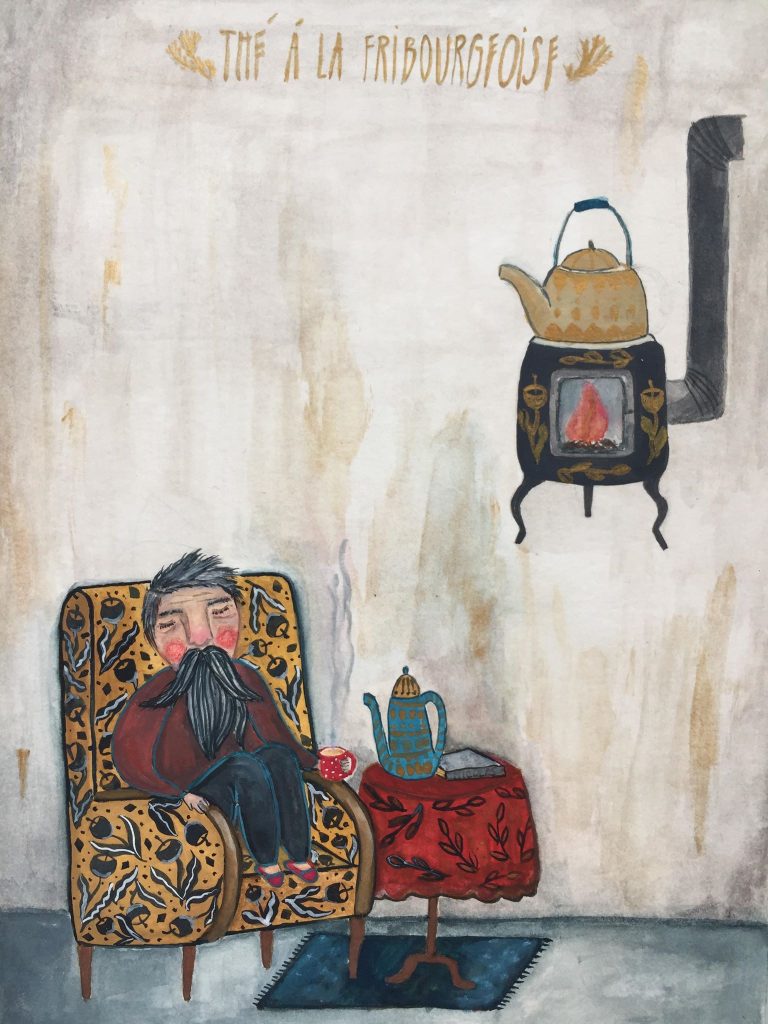
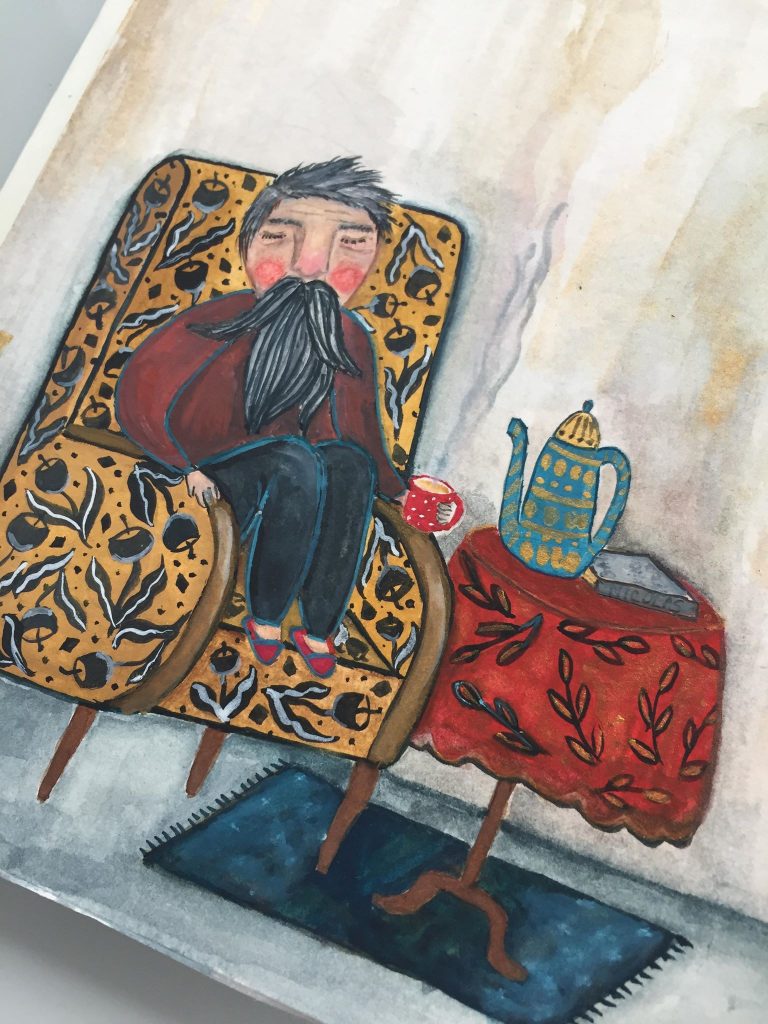


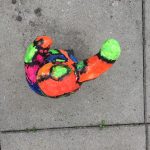
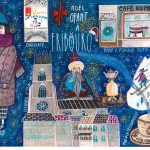
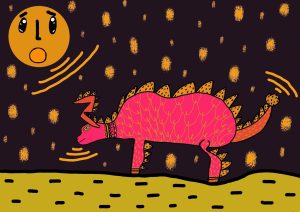
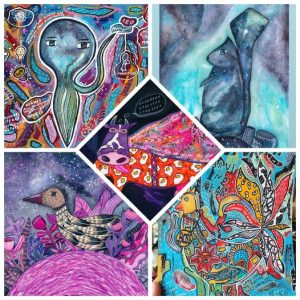

1 Comment
I would like to buy a print of the st nic with tea and the text with the a la fribourgoise
can you help me
many thanks
tim